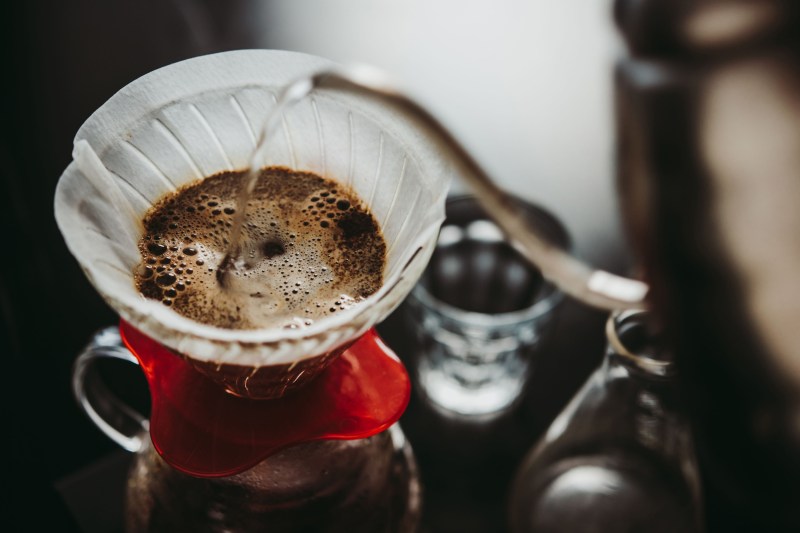If you like your morning pour-over coffee bold and strong, it can take some trial and error to adjust your brew to your liking. The art of pour-over coffee is unique, creating a balanced, rich, and complex coffee flavor that stands out from other brewing methods. But what do you do when your pour-over coffee keeps coming out too weak?
Making a few small adjustments to your pour-over brewing process can easily improve the strength of your final cup of coffee. For example, you can adjust your water-to-coffee ratio, grind your own beans, and ensure the proper water temperature for your brew. Here are our best suggestions on how to make pour-over coffee stronger.
How to make pour-over coffee stronger

If you’ve found your pour-over coffee to be too weak, we recommend starting with the basics. The most common reason is using the wrong grounds-to-water ratio.
Examining grounds-to-water ratio
The grounds-to-water ratio you use ultimately determines the strength and boldness of your cup of coffee. As a general rule of thumb, start with 14 to 20 grams of water for every 1 gram of coffee you use. Standard pour-over coffee ratios usually range from 1:14 to 1:20, with 1:14 resulting in a stronger cup of coffee.
If you prefer measuring in tablespoons, this equates to about 1.5 to 2 tablespoons of ground coffee for every 8 ounces of water you use. As you experiment to find the ideal ratio for your taste preferences, you can either cut back on the amount of water used for a smaller cup of coffee or increase the amount of coffee grounds you’re using to make for a stronger cup.
Eyeballing your coffee measurements sounds good (and easier), but you may be using more or less coffee than you think. Using a coffee scale can help yield more precise coffee measurements to help you craft a stronger cup of coffee.
Using the right water temperature
Another component of a great cup of pour-over coffee is using the right water temperature. If you’re using water that is too low, the coffee may not extract properly and you’ll be left with a weakened cup of coffee. For the ideal cup of pour-over coffee, water should be between 199 and 205 degrees Fahrenheit. Having the right equipment on hand is essential for this step, such as an electric gooseneck kettle that can be set at precise temperatures.
Using a gooseneck spout lets you control the water flow when making pour-over coffee for a precise brewing process. If you’ve been attempting to pour over without checking the temperature of your water, adjusting this may help you increase the strength of your brew.
Selecting freshly roasted beans
Regardless of your selected brewing method, selecting freshly roasted beans will always yield a bolder, stronger, and fresher cup of coffee. Using stale, old beans is a common mistake. Subscribing to a coffee subscription service is one way to ensure you always have freshly roasted beans right at your doorstep.
Of course, grinding your own fresh coffee from whole beans rather than using pre-packaged ground beans can help enhance freshness, too. To do this, you’ll need either a burr grinder or a blade coffee grinder. Burr grinders are best for ensuring a consistent grind size for stronger pour-over coffee, such as the Fellow Buy at Fellow Burr Grinder. While this is certainly investment, it’s a worthwhile one if you’re regularly looking to produce the best possible cup of pour-over coffee.
Choosing the right coffee ground size

When it comes to making pour-over coffee, selecting the right coffee ground size is a critical step. Using ground coffee that is too coarse or too fine can change the end product. As you consider how to make pour-over coffee stronger, take a close look at the grounds of the coffee you are using.
The best coffee grounds for pour-over brewing is a medium size (similar to sea salt). Selecting the right size of coffee grounds is important because a ground that is too coarse will allow water to pass through too quickly, whereas a ground that is too fine will result in a weak or bitter cup of coffee.
Experimenting with pour-over coffee

All in all, there’s quite a few different components required to brew a delicious (and strong) cup of pour-over coffee. Through a process of trial and error, achieving a strong and delicious cup of pour-over coffee at home is more than doable — even for non-baristas.




